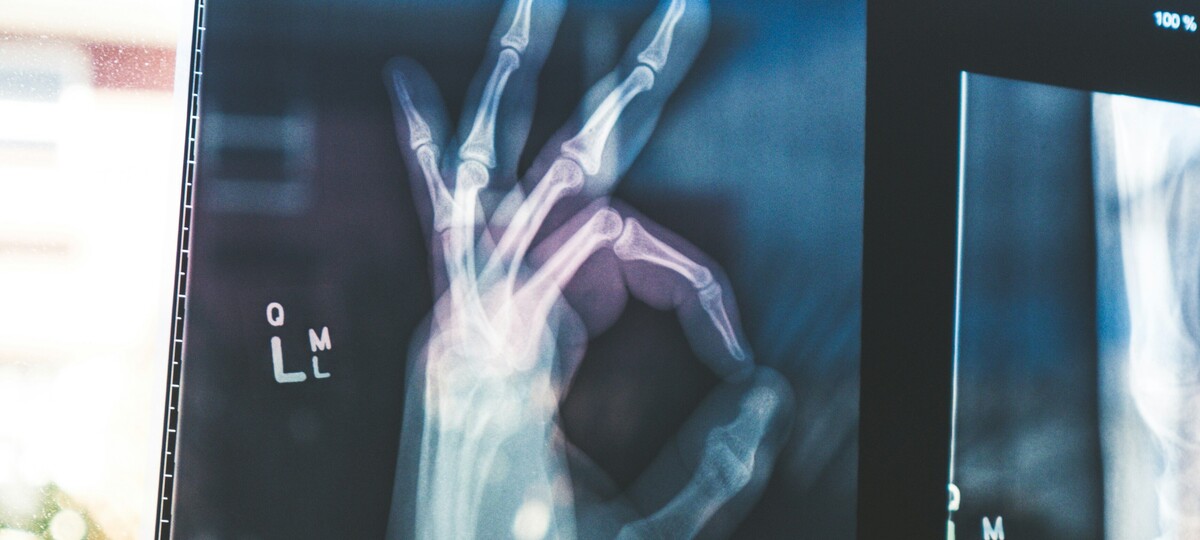
Most of us don’t give much thought to osteoporosis because we’re healthy, strong and can do what we set out to do. But an estimated 10 million Americans have this bone disease that occurs when the body loses calcium from bone faster than it builds new bone. That results in low bone density, which increases the risk of a broken bone. That happens in about half of women and up to 25% of men over age 50 with osteoporosis.
Our risk for osteoporosis increases after age 65. But the good news is that it’s a disease we can do something about now, before we reach 65. First, make sure your daily diet includes foods containing calcium and vitamin D, such as dairy or fortified dairy substitutes. Dairy products are the main source of calcium in our diet. Fish with bones (sardines, anchovies and some canned salmon) also contain calcium. Some plant foods such as leafy greens and almonds contain lesser amounts. You can also buy orange juice with calcium — just make sure you shake the container, as the calcium tends to settle in the bottom.
The Recommended Daily Allowance for calcium is 1,000 milligrams daily for women 50 and younger and men 70 and younger. Older women and men need more — 1,200 mg of calcium every day. For reference, an 8-ounce glass of milk has about 300 milligrams of calcium. Yogurt also can be a great source of calcium.
In addition to calcium, magnesium, potassium, vitamin C and vitamin K are also important for bone health. Fruits and vegetables are great sources of those nutrients.
Engaging in physical activity is also important. Try to include weight-bearing exercises like walking or jogging as well as muscle strengthening (weightlifting) and balance exercises (yoga).
Take the simple step of getting a bone density scan if you’re concerned about your risk for osteoporosis.
The bottom line is our bone health is critical to safeguarding our ability to live an active, independent life, something we all desire.
Q and A
Q: It seems COVID-19 is still around. Can a healthy diet help prevent COVID-19?
A: Nutrition does play a role in this pandemic, according to Alice Lichtenstein with Tufts University. She writes in the latest issue of Tufts University Health & Nutrition Letter that diet is strongly tied to prevention and treatment of obesity, high blood pressure, heart disease and diabetes. People with those conditions have worse outcomes when they contract COVID-19. A healthy overall dietary pattern with plenty of fruits, vegetables, whole grains, lean protein and low-fat dairy supports good cardiometabolic health and helps support a strong immune system. Both are helpful in preventing COVID-19.
RECIPE
If you’re needing a break from turkey after the Thanksgiving holiday, try this recipe for Cuban pork roast. Much of the flavor comes from a garlicky mojo sauce that’s used as a marinade and sauce. It’s from Today’s Dietitian.
CUBAN PORK ROAST
Servings: 6
15 cloves garlic (about 1 head), peeled
1 1/4 teaspoon salt, divided
1 large onion, sliced
1/4 cup orange juice
1/4 cup lime juice (about 2-3 limes)
1 tablespoon dried oregano
1 teaspoon ground cumin
1/3 cup olive oil
2 pounds pork tenderloin
Place garlic cloves in a mortar and lightly crush with the pestle. Sprinkle 1/4 teaspoon salt over the crushed garlic and mash into a paste. Transfer garlic paste to a large zip-close bag and add remaining salt, onion, orange juice, lime juice, oregano, cumin and olive oil and mix well. Pierce pork all over with the tip of a sharp knife and place meat in bag, making sure to coat pork well with marinade. Press out as much air as possible from bag before sealing. Pork should marinate in the refrigerator 30 minutes to 24 hours. Preheat oven to 350 F. Place a nonstick oven-safe skillet over medium-high heat. Remove pork tenderloin from marinade, taking care to leave behind as many bits of onions and garlic as possible. Reserve marinade. Sear pork until golden brown on all 4 sides. Transfer pan to oven and roast for 30 minutes or until pork reaches 145 F in the center. Meanwhile, place reserved marinade in a small saucepan and bring to a boil. Allow to boil for 2 minutes before lowering to a simmer. Continue cooking on low until the pork is ready to serve. When pork is ready, remove from oven and allow it to rest for 5 minutes before slicing. Drizzle some sauce over pork and serve remaining sauce on the side. Serves 6.
Per serving: 344 calories; 41 grams protein; 7 grams carbohydrate; 17 grams fat (4 grams saturated); 110 milligrams cholesterol; 1 gram fiber; 2 grams sugars; 573 milligrams sodium.
Charlyn Fargo is a registered dietitian with SIU School of Medicine in Springfield, Illinois, and the current president of the Illinois Academy of Nutrition and Dietetics. For comments or questions, contact her at [email protected] or follow her on Twitter @NutritionRD. To find out more about Charlyn Fargo and read features by other Creators Syndicate writers and cartoonists, visit the Creators Syndicate website at www.creators.com.
Photo credit: Owen Beard at Unsplash
